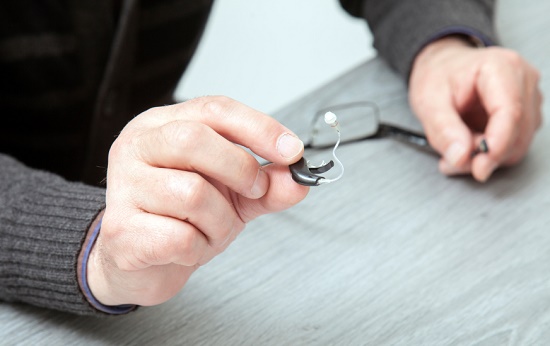
Murphy’s Law informs us that “if anything can go wrong, it will.” A better variation might be that “things will go wrong in any given situation, if you give them a chance.”
In terms of vehicle maintenance, that’s the reason we change the oil in our cars, replace the filters, and rotate the tires. We’re attempting to protect our investment and stretch its life.
You should certainly consider hearing aids in a similar manner. If you give things an opportunity to go wrong, they will; but if you’re proactive in your maintenance, your hearing aids can last and perform properly for several years.
So what are the things that can go wrong? Below are the three primary threats to your hearing aids and what you can do to safeguard against them.
1. Physical breakdown
Opponent # 1 is physical destruction. Hearing aids contain sensitive electronics that are susceptible to damage from shock. To defend against this, ensure that you store your hearing aids in their storage cases anytime you’re not using them.
An effective guideline is that your hearing aids should be either in your ears or in the storage case at all times. Leaving your hearing aids unprotected on any surface is just asking for Murphy’s Law to come and bump them off. Similarly, when you’re inserting or removing your hearing aids, it’s a good idea to do this over a soft surface in the event they fall.
In addition, remember to check and replace the batteries often. You’re not doing the circuitry any favors by having the hearing aids work on low battery power.
2. Moisture
Electronic devices and water do not mix, which anyone who’s dropped a mobile phone in the sink knows all too well. Once immersed, there’s very little that can be done. But it requires much less than total submersion in water to harm your hearing aids.
Water, in the form of mist, can still work its way into the hearing aids and start wreaking chaos. Because of this, you should avoid using hairspray, insect spray, or any other sprays while using your hearing aids. Also, remember that radical changes in temperature can generate condensation, for example moving from a climate-controlled room to the outdoors. If this happens, ensure that you dry off any wetness that develops.
We also highly recommend not storing your hearing aids in the bathroom, as the condensation can generate issues. This is yet another reason that your bedside table drawer is probably the ideal location to keep your hearing aids when not in use.
3. Earwax and dirt
Even if you’ve protected your hearing aids against physical damage and water with adequate storage and the prevention of moisture, you’ll still have to protect against opponent # 3: dirt and grime.
Earwax, dust, and debris can build up on the hearing aids, clogging the speakers, ports, and other elements. To protect against this, 1) sustain proper ear hygiene, and 2) clean and sanitize your hearing aids every day.
Regarding cleaning and sanitizing your hearing aids, make sure to use only the equipment supplied by your hearing professional. Your hearing professional can provide cleaning kits and directions exclusively for your type of hearing aids.
Finally, think about buying a hearing aid sanitizer. Sanitizers make use of ultraviolet light to comprehensively kill pathogens, all while supplying a safe place for storage.
